Blog Posts
The Power of Looking Forward to Being Wrong
By Todd Gifford |
Todd Gifford – Success Coach
Who likes to be wrong? Nobody! And I don’t think I am wrong when I am doing something or saying something that I think is right. I think I am pretty normal that way.
But in recent years, the more I read and the more I learn, and the more I do — the more I am becoming receptive to being wrong. And maybe more importantly, I actually look forward to being wrong.
Why?
Being wrong, if doing and executing things constructively and at your very best, means that I have the opportunity to learn something new. What I did or what I said or what I thought was found to be “wrong”. But when I did it, said it, or thought it — I thought it was “right”. Effectively through this process, I tested something and found out that it did not work, or work well, as a result of being wrong. THIS IS HUGE…if you are receptive and open and being alert to being wrong, when you are wrong.
Being Wrong is Failure, or…
Being wrong is essentially a “failure”, right? Being wrong or partially wrong happens more times than you think, but most people are largely unaware of these ‘being wrongs’ unless they are on the lookout for them. If people don’t want to be wrong, then they have a tendency to avoid the possibility of being wrong. Many of these ‘being wrongs’ are ultra-small impact or micro-wrongs. To the naked eye, many of these instances are “0 impact”. But they are wrong, nevertheless. You can think of these being wrongs as failures — But I like to look at these wrongs as Test Data. In other words, I have tried to develop a perspective of looking at being wrong and failures, small or big, fundamentally differently — to turn it into an advantage for me and a growth/success trait as opposed to something negative.
Through a lot of reading as well as interaction with highly successful people, one very common theme of personal and professional success I have come to observe and understand is to: not look at failure as a bad thing. It is a very good thing. And, to take that further, it is wise to pretty much take the word failure out of your vocabulary altogether. Instead, look at Failure = Testing. Or, Failure = Trying and Learning.
Failure Means Progress and Innovation
If you are open and receptive to being wrong, and if you are executing and “doing” a lot (whether it be at work or in your personal life) toward your desired goals and objectives, then essentially you are “trying” a lot of things. And trying a lot means failing (testing) a lot. And failing (testing) a lot, means learning a lot with respect to what is working and what is not working. And learning about what works and what doesn’t — and applying that to the next thing you try — means you are innovating. You can’t be an innovator without trying (testing) a lot and you can’t try a lot without failing (test data) a lot! I want to be an innovator and I want to be around people who are innovators. And by framing ‘being wrong’ into progress and innovation, as long as I am truly being receptive and open to what my wrongs are, is a very powerful success trait to employ.
Being OK With Being Wrong a Lot Promotes CREATIVITY
I have studied the concept of Creativity and Creative Thinking a lot over the years. Besides putting together a Creativity System and Reference Guide, I have learned that being able to be open and receptive to being wrong (truly receptive and open and aware of when I am wrong) spawns and promotes creativity and creative thinking.
When I focus on the fact that pretty much everything I do could be or may be wrong (testing and test data), I pick up on my did-it-wrong’s or did-not-work’s much more quickly and more often. Through this, I learn more — because you learn more when you are wrong than when you are right. This learning generates more questions like “well, if that did not work, would would work? or work better?”. This is very powerful Creative Thinking.
Thinking you are right when you are really wrong or thinking something is working when it really is not working is a very dangerous thing countering your/my success. The sooner I know I was wrong (failure = testing data to make a change) or the sooner I know that something I did is not working, the sooner I can make a change and try (test) something else. And Creativity (whether applied to solving a problem or developing a new product/concept or achieving a goal), as I have found through my research, is really a lot about ADAPTATION, not some magical genius. And one key to being able to take an Adaptive approach to achieve success is to have a lot of example test or comparable situation data. And one main source of that data is trying and being wrong!
So, look forward to being wrong. Try harder to be truly open and receptive to being wrong, and constantly look for your wrongs — but know that they are all just test data from trying that can and should be turned into powerful positive forward progress, creativity, and innovation.
Be Your Best,
Todd D. Gifford
A Lifetime of Constant Learning and Learning from Pain — the importance of getting comfortable getting uncomfortable
By Todd Gifford |
Todd Gifford – Success Coach
Like a lot of you I am sure, our house is full of books. Books everywhere. My wife likes novels, history books, and big encyclopedic type reference books on many topics. I like “how-to” books, automotive/old car reference books, business books, and fitness/sports/wellness books. And then of course our kids have more books and are becoming proactive book readers. Heck, how can they not be — we are running out of space to put all the books! I was thinking about how we ended up with so many books and when we purchased each one of them, since we did not acquire them ‘in bulk’. It is about 28 years of book accumulating.
The general answer to my question of ‘when did I get each book?’ is: when I felt some sort of pain and needed or wanted to learn something. It is not always the same type of sharp pain when you stub your toe, but it could have been a kind of burning pain that drove us to learn. I know for myself that once I become aware of something that I am interested in (home repair/improvement project, a sport, a hobby, etc…), I immediately start to experience some ‘pain’ of feeling unknowledgeable or incapable — so I usually turn to books to begin the learning process. And then once I begin learning more about the thing that I wanted to pursue, I find out how much more I really did not know and still don’t know, and may never know. This creates more ‘pain’…and then more learning (and more books!). And the more I realize how much I don’t know about so many things that I think I should understand and know about…
…it creates the concept or philosophy for me of a lifetime of constant learning. Over the years, I have come to look at this pain-learning-pain-more learning-more pain-more learning cycle as one huge “goal” of: a lifetime of constant learning. And the pain that causes me to want to learn (and read) is pain that I really want to have as much as possible, seek out, and experience. “Passion” can be substituted for the word “Pain”. I feel that passion is a form of pain. So if passion makes more sense vs. the word pain, insert it.
And the point of this is…?
I think a lifetime of constant learning is a worthy, rewarding, but challenging goal. Knowledge = “wealth” = ability to try new things = fun/excitement = happiness. But it really is a challenging goal for several reasons. First, there is a paradox going on at all times. I am trying to learn to master any given endeavor (basically trying to ‘conquer’ it) as I learn about it — and achieve the feeling like I know it all or have it mastered. But the moment you think you know it all or ‘enough’, you stop learning. And if you stop learning, the knowledge = ‘wealth’ = try new things = excitement = happiness equation above stops happening. This applies to everything: golf, model building, dancing, playing the piano, gardening, or whatever. You basically have to operate comfortably in constant paradox: always try to learn it all, but know that you will never learn it all. Second, learning takes time and effort and focus. Time is precious and limited, and focusing on learning is even trickier with all the daily distractions. You could say that you are learning as you watch TV or surf the web on your smart phone, but that kind of learning is spotty. Third, you have to approach learning with a consciously open mind.
Like a great quote I heard many years ago says: “Your mind is like a parachute — it only works when open.” This means that you should consciously be thinking about and focusing on the learning process in order to learn. It takes some practice.
Reading is obviously not the only way to learn. DOING is another powerful way to learn.
More on learning via Pain
When you do and try a lot of things (which tends to increase the more you read and learn), you increase your chances for having more pain through failure. But it is these painful experiences and failures that create powerful learning experiences. Not trying things for fear of failure removes one of the most important lifetime of constant learning opportunities. Rarely do we learn important lessons from our successes, but rather from our setbacks. Here again, another paradox that you must be comfortable with to execute the goal of a lifetime of constant learning: you try as many things as possible and try to succeed at everything you do, but you know that you will learn more from failing than succeeding.
Read and Do. Read and Try. Try and fail (or succeed) as much as possible. It’s the goal of a lifetime of constant learning!
Another great quote I really like:
“To be really successful in life, you must get comfortable with getting uncomfortable.”
The way I translate this quote is that you want to constantly try things that create pain (failure), which then force you to learn, which many times forces you to read. That then makes you comfortable, and then you want to seek to get uncomfortable again. This cycle produces growth and success.
Be Your Best,
Todd D. Gifford
The Art of Self Motivation
By Todd Gifford |
Todd Gifford – Success Coach
Learning how to motivate myself and manage my daily motivation is something that I feel is not only one of the most important skills one can have, but may be one of the greatest gifts I can give to myself.
If you really want to achieve the success in life that you seek no matter how you define it, it does not just come to you because you want it to — most of the time anyway. You have to make it happen. And in order to make it happen, you have to be motivated to take action. And to keep yourself consistently motivated, you have understand a fundamental principle: all motivation comes from within.
I think one of the biggest differences between an ordinary person and an extraordinary person is their degree of consistent motivation and passion.
Creating Self-Motivation
So if motivation is one of the most critical aspects of success, and motivation comes within, then what is the secret to staying motivated and creating motivation. Underlying motivation is your desire. Desire is sort of the root of motivation. There first has to be strong desire in order to create motivation. This was a concept outlined in the bestseller book ‘Think and Grow Rich’ by Napoleon Hill. Desire is analogous to fire — a small fire makes a small amount of heat. A big desire creates big motivation.
In order to create consistent motivation, I need to tap into and strengthen my most important desires. In the midst of the daily trials and tribulations, it is very easy to never sit still long enough to put some undisturbed thought into what your most important desires are. Left to chance, it seems like I am always reacting to the moment and the events that are happening around me. I have to consciously carve out time to quietly think about my desired feelings, desired outcomes, desired goals, desired health, etc… This all boils down to identifying most my important desires as of right now.
Intensify your Desires to Drive Motivation
But just thinking about what you want or desire is not enough to create the type of sustained motivation that drives success. You really need to intensify those desires by thinking intently about how much you really want those desired outcomes and, another key secret ingredient that I have found to be an outstanding way to intensify desire: think about how much you do not want the alternative to those desires to happen (imagine extreme pain).
This should not be a one-time exercise. The more you can carve out some time to explore and identify your desires and the opposite of those desires, the more your desires can create excellent and sustained motivation. Remember that your desires change as your life changes and evolves.
My Goals from 3, 5, 10 years ago…
I do a pretty good job of writing down my goals (formal manifestation of my desires), and I find it interesting to review the ‘old’ goals 3-5-10 years later. When I review these, one of the interesting things is how many of these goals I achieved or surpassed but never really consciously realized that I did achieve them — because it took me a little longer than planned. But the other interesting thing I find is how some of the goals I had 3-5 years ago are not that relevant or desired today. Of course, “excellent health” has always been on my goal list over the years, but the way I perceive that I need to achieve excellent health changes. Things evolve. As I get older, I find that I need to ‘do more’ in order to achieve the same ‘excellent health’ goal. Dang, I wish that was the other way around!! Some changes are more dramatic — to the point where I cannot even remember having that particular desire.
Your Beliefs Are Critical to Your Motivation
Another key part of creating self-motivation is examining your beliefs — beliefs about yourself and beliefs about what is possible. Belief in yourself is really a foundational starting point for all achievement and success. You need to have courage, patience, positive attitude, etc… But it starts with an essential ingredient of an absolute belief in yourself. The “how-to-do-it” always comes to the person who believes “they-can-do-it.” As I have written about in previous articles, be very careful how you talk about and to yourself, as all that self-talk feeds your beliefs about yourself (i.e. exchange “I am always late” with “I am a very prompt person and work hard at it”).
Beyond believing in yourself, you choose what you believe is possible. Belief is a very powerful thing we all have, and it can be creative or destructive. Try to remember that as the famous Irish poet George Russell once said: “We are self-fulfilling prophecies. It doesn’t matter if your beliefs are true or false, your beliefs eventually become facts.” Earl Nightingale famously said something very similar: “We become what we think about.” Your beliefs are much like a thermostat — they regulate what you accomplish in your life. If you believe you are stuck, you are. If you do not think you are stuck, you aren’t! And remember the old saying: “If there is no wind…row!”
Be Your Best,
Todd D. Gifford
Your Internal Dialog, Using Pattern Interrupts, and The Principle of Maximum Error—Why Each of These Concepts Should Be Very Important To You
By Todd Gifford |
Todd Gifford – Success Coach
We all do it. I do it. We tell ourselves how ‘bad’ we are all the time every day. We say to ourselves “I am always late”, “I never can do this right”, “I am terrible at X”, or “there is nothing I can do on this”. This is what I call Internal Dialog — talking to ourselves about our self. The problem is with internal dialog is that your brain does not try to decipher or filter what you put into it via your internal dialog — it just processes what you give it ‘as is’. Essentially, all of your internal dialog results in directions given to your brain, negative or positive. It’s pretty powerful stuff, but it is so ‘under the radar’ that you really don’t think much about all of this going on.
If you think of your brain as a computer, and it’s a fair analogy to use based on science, negative input creates negative output. Your brain essentially seeks to become what you put into it. Not sure if you have ever heard the saying: “You become what you think about”. I believe this saying was coined by the late Earl Nightingale in the 1950’s. The nice thing is that you can completely control your internal dialog or self talk, but you have to make an effort and pay attention to it to build up some good positive self talk. For all the bad things about negative internal dialog, just the opposite is true with positive internal self talk. Work hard to change your ‘I can’t…”, “I never…”, or “It doesn’t…” dialog to: “I can…”, “I always…” and “It will…” positive statements.
All action starts with a thought. Thoughts are translated by words and pictures, so the words you use with yourself and the pictures you create need to be positive ones for you to consistently achieve positive results regardless of what you are doing.
Pattern Interrupts
Pattern interrupts are a very valuable tool, because even if you work hard on using positive self talk and positive internal dialog, there will be times you start “talking” negatively to yourself. A pattern interrupt is a technique to catch yourself doing this and ‘jolt’ or ‘interrupt’ this situation, and sort of reset the situation. An analogy of a pattern interrupt is when you are shopping and a Fire Alarm goes off. No matter what you were thinking or what type of mood you were in, that fire alarm interrupts your pattern, and your focus and thought instantly change. Even if you were in a sad mood, when that fire alarm goes off, you are instantly transported out of that mindset to a different mindset. You can create your own pattern interrupts to reset your mind to a positive position. Let’s take the example that you are running late to a meeting, and your internal dialog is saying “you are always late, every time”. All that is doing is telling your brain “you will always be late”. Using a pattern interrupt, when you catch yourself thinking this, then you can imagine pushing a huge ‘reset button’, and saying to yourself, ‘this is not like me, I am always on time.” It seems a little corny, but just remember, to your brain, input = output. You really do have control over how you feel at any given moment. The proof that you can change how you feel instantly is in the fire alarm example — ever notice that a while after the fire alarm (pattern interrupt) happened, you don’t return to the same state of mind you were in before it happened? You hit the reset button.
The Principle of Maximum Error
Most negative internal dialog revolves around mistakes and errors, and beating yourself up for doing this or that wrong or poorly. I came across a very interesting principle, known as Dancoff’s Formula or the Principle of Maximum Error. Over 50 years ago a scientist named Sidney Dancoff appeared in a leading physics journal. Dancoff worked on many projects in nuclear physics, including the first atomic bomb, as well as biophysics (the intersection of biology and physical science). The journal article described a formula (describing microscopic biological processes, but I think applies to all areas of our lives) that says: Optimum development occurs when an organism makes the maximum number of mistakes consistent with survival. In other words, it is saying that the more mistakes you make, the closer you get to being the best you can be, provided the mistakes you make don’t kill you. That basically means that nonfatal mistakes should not be avoided, but rather considered good. That is not to say they will not be painful, but pain most times equates to learning — and learning moves you toward mastery in some way. Bottom line is that you have a real reason to use positive vs. negative internal dialog when you make mistakes, because the learning from the mistakes is moving you towards being better.
Be Your Best,
Todd D. Gifford
The 24 Hour Rule for Preserving the Genius in Ideas and the Ironic Effect of setting a Goal Way Too High
By Todd Gifford |
Todd Gifford – Success Coach
You are riding in the car and have a brainstorm great idea. You find a scrap piece of paper, hopefully, and write it down. You are in a meeting and someone in the group identifies an excellent concept or idea, and you make note of it. While taking a shower, an excellent strategic idea comes to mind. Well, somehow you retain it to get it written down before it is gone.
All this is about capturing the ideas as they are created, and is critically important. However, the more important aspect of the ideas is what is done with them after they are identified. How many great ideas lose steam after a week or a month, and when you look at them, they just do not have the sizzle that they had when they were hatched? The impact is just not there like it was, and it is difficult to retain the same energy and enthusiasm behind the idea after this time goes by. It happens a lot. If fact, it happens most of the time with good ideas. There is some science behind why this happens.
When an idea is conceived and then subsequently written down, there is a whole lot more about the idea that is critical to the essence of the idea that does not get captured in the written description or note of the idea. These are details that make the idea great or unique. Many times the ‘broad’ idea is nothing new, but the details of the idea as developed make it special or powerful.
The ‘24 Hour Rule for Preserving the Genius in Ideas,’ that I picked up from Michael Masterson, best selling author and multiple large business’ entrepreneur, says that if you do not act upon your new idea within 24 hours (and preferably less than 6 hours), you quickly begin to lose those critical details and the essence of why the idea is great and unique. Ideas that are left in limbo, for even a few days, lose details, obstacles start getting in the way, and energy begins to fade. Yes, you still have it written down, but it starts getting harder and harder to implement. Those little details that were not written down, or potentially even difficult to put into words at the time of the idea, start floating away and getting lost. I find that my brain tends to want to oversimplify or summarize things over time, so some of those crucial details get condensed or ‘smoothed’ over to simplify the concept. There are a few courses of action to prevent this situation from happening to you.
First and foremost, we need to begin to take action literally at the moment of inception of the idea, before any of the essence is lost or forgotten. That could be a quick phone call to move it forward, or an email communication to the person where next action is required, or quickly drawing a flowchart or image, etc… Instead of having the feeling of ‘I feel great that I captured that great idea’ (as I personally have had many times in the past — feeling like if I captured the idea, I was half way home on moving it ahead), the approach should be: a) capture the idea, but then immediately…. b) what 2-3 things can I do right now to move this idea ahead before it starts to lose its essence and power. Perfect is the evil of Good. At this point, you want to be focused on actions that are ‘good enough’, not perfect. Things can be tweaked down the line.
Another strategy that you can employ to better capture and retain the details and essence of new ideas is to record the idea creation process, so you can go back and replay it to pick up those little details. This can be as simple as recording your own ideas in the car or wherever, or recording brainstorming meetings, etc… With a $35 micro digital recorder, you can capture the details and then delete them when the idea is off the ground and running.
Yet another key strategy is to convey this concept to your team and teammates that the space of time that stands between the generation of an idea and it execution is filled with the potential for failure.
Everyone knows that setting Goals is critical to success. However, the Goal itself that is crafted can have as much or more to do with the outcome as the goal setting process. What I have found in my own experiences, as well as reading about and talking to other highly successful people in business/sport, is that selecting a goal that is way higher/bigger than desired, or nearly unachievable, actually makes it easier to attain your true goals. It’s an irony that I often forget, but keep reminding myself through real life examples. And it works very effectively at many different levels. Let me give you some examples.
Take my personal dream goal of ultimately finishing the Iron Man Triathlon event at some point….a nearly unachievable goal for me. However, by setting that as my big Goal, even though it is nearly unachievable, it has made achieving some lesser important, but still big milestones for me possible. Why?
When the brain is acclimated to a new big goal, everything along the way to that goal seems easier than it did prior to the uncomfortable goal being set. It works at a more tactical level as well. Within the ‘Triathlon Goal’ example for me, the training process itself is filled with many new goals. Some of those are way outside my previous comfort zone, like the distances of swimming, running, and cycling. Take the running — although I am a routine runner/jogger, I have never run over 4 miles at a time (and I usually only go about 2.5-3 miles at a time — and I am ‘done’). Within the training plan in week #4, there is a 60 minute run (about 6.5 miles). When I put that goal into my head, it was interesting how I ‘adjusted’ to the point where on that run, the 4-mile mark did not seem that big of a deal any longer. In other words, my brain said “I am going for 60 minutes”, and it began to disregard any previous thoughts like “30 minutes is my limit and I am done.”
It’s an irony that has some pretty powerful possibilities for achieving results in any field of endeavor.
Be Your Best,
Todd D. Gifford
Becoming Your Big Self — Transformation
By Todd Gifford |
Todd Gifford – Success Coach
I was recently reading about personal self-improvement, which I do a lot of, and I came across a really great phrase from a gentleman named Craig Ballantyne that describes a state of mind that I think is extremely important for being successful — “Transforming yourself requires you to Become Your Big Self”.
Being highly successful in work, in family, in hobbies, and in life many times requires transforming yourself from what you are now to what you want or need to be. Sometimes the change required is relatively small, but there are times when a fundamental or large change is required if you want to achieve really important goals. I now call that large change situation “transformation”, because you really are transforming your old self to a new self.
Big Self vs. New Self
What I really like about the phrase “transform to become your Big Self” is that it says that everyone has this Big Self in them. It is not whether you can transform — it is that in order to transform, you have to become that Big Self that we all have in us. That Big Self may be difficult to find or understand or buried deep, but it is in there for sure…in all of us.
I am a big believer in setting goals, writing them down, and, if possible, even create a vision board or vision map creating visual versions of your goals, and reviewing them often. When I pick or set my goals, of course some of them (ok, maybe even many of them) I really do not know if I will achieve them or not. I have faith in myself that I can achieve them, and I would like to think that I ‘know’ I will achieve them, but I have never been able to have that 100% belief that I WILL achieve them. Rather, I know 100% that if I honestly intend to achieve them, and that intent is strong enough to take consistent action towards achieving them, that I have a very good chance of achieving them. I know that is because after many years of setting goals, intending to achieve them, achieving many, falling short on others, and actually achieving something more significant on yet others — I can rely and have faith in this formula. Set Goal…Create Strong Intent to achieve goal…Take consistent action to achieve goal = very high likelihood of achieving goal.
The Big (Mental) Self
Getting back to the transforming and becoming your Big Self concept – after I read this phrase, it really created a feeling and a visual for me to help foster the Intent part of my pursuit of attaining or reaching a goal. I had rarely thought about pursuit of most goals as a true transformation of myself into a new self, and I think it is a bit of an abstract concept. It’s abstract from the perspective that a very large (and much larger than most people think) portion of achieving lofty goals is ‘mental’. I have learned this through my own experience as well as from highly successful people. Most people think of a transformation only in physical terms. Whether it is losing a lot of weight or getting into better physical condition, or even achieving some form of a work/project goal or monetary goal — most people only think about the physical, tangible changes. The reality is, gathered from all of my reading as well as interacting with highly successful people in different areas of business and life —- it is the mental transformation required that is the most important AND THE MOST DIFFICULT.
2 Levels of the Big Self
When I think of transforming and becoming my Big Self on any particular goal that I am trying to accomplish, I clearly see that ‘Big Self’ on 2 distinct levels: the physical Big Self and the mental Big Self. This is very powerful, because making the mental shifts, changes, and transformation required is so critically important to achieve big results at whatever you are pursuing. And because the concept of transforming to my Big Self “assures” me that that Big Self is in there somewhere, it gives me great confidence that ignites the all-important intent to pursue the goal and begin taking action. Knowing that the Big Self is in there helps create that strong belief that the goal is achievable. And that feels good.
If you are not a big goal setting person, I recommend that you become one. Many times people shy away from setting and writing down goals because of their fear: ‘what if I don’t succeed at achieving the goal I set?” The reality is that nothing bad happens if you fall short of a goal you set for yourself. The other reality is what you achieved in the process is probably significantly bigger or better than what you would have obtained had you not set the goal. Thinking about transforming into your Big Self (that is already inside you) will make goal setting less intimidating. And if you are already a goal-setter, leverage this transforming to your Big Self concept to become more effective at achieving your goals or achieving even bigger goals.
Be Your Best,
Todd D. Gifford
The Only 3 Situations When Multi-Tasking Is A Good Thing…
By Todd Gifford |
Todd Gifford – Success Coach
I can’t count how many times I have heard someone tell me they are a great multi-tasker. For whatever reason, “multi-tasking” has been turned into some type of badge of honor. There was a time I thought that multi-tasking was a means to get more done in a shorter amount of time, and therefore, more efficient. On top of that, there was a time when being able to do 3 things at one time made you some type of top performer in my mind.
As I gained more years of experience, read more books, and spent time around extremely successful people, it became very apparent to me that multi-tasking was a recipe for ineffectiveness and inefficiency. Bottom line in my book is that multi-tasking is a very bad thing with only a very few limited exceptions, which I list below. The fundamental reason that multi-tasking (aka doing more than one thing at one time, or bouncing around quickly between several things within a relatively short time period) is very detrimental to overall performance is that your brain is never allowed to fully focus on any of the tasks or projects —- and hence, less than full performance output.
Structured Distraction
Multi-tasking can feel good and feel effective, but science is flat out against you in multi-tasking mode. Multi-tasking is ‘structured distraction’ at its best. There is a lot of scientific research about how your brain behaves and performs under various situations. When you are momentarily distracted from a train of thought or focus, even for just a few seconds, your brain takes a significant amount of time to reengage back to the previous task/focus at an effective performance level. The amount of time to refocus back into a well-concentrated state varies in the various studies, but they all agree it takes minutes (not seconds). Further, another big problem with distraction is that you can lose information and ideas that were developing in the well-focused time period. It is a bit like ‘starting over’ after a distraction takes you out of your focused concentration zone. A lot of creative ideas and innovations are a result of a cumulative process of thought or sequential thoughts: “XXX leads to YYY which is linked to ZZZ, which is just like AAA, etc…” Jumping in and out of topics or concepts does not allow your mind to as effectively accumulate the sequence of ideas as does consistent focus and concentration on one task. If that is not enough, distraction creates more errors.
Being In the Zone
We have all had those periods of time where we lost track of time or forgotten what we are even doing at the moment because we were so deeply engaged and focused. It could be doing a sport, being engaged in a hobby, working on a project in our job, etc… We have come to anecdotally call this state as being ‘in the zone’. More technically defined, Mihaly Csikszentmihalyi wrote a best-selling book called “Flow: The Psychology of Optimal Experience” where he unpackaged the concept of being in the zone (he calls it a “Flow state”) and describes how to achieve it whenever you want. Although Csikszentmihalyi describes the Flow state (aka ‘in the Zone’ state) as more than just focused and distraction-free (he also includes extreme state of satisfaction, enjoyment and highly creative), the Flow/Zone state is a period of massive productivity and innovation. Think about a hobby or sport you are extremely passionate about and then think about times where you have been so immersed in that activity, that hours have gone by and it felt like just minutes. In these situations you tend to accomplish a great deal. Your concentration and focus is extraordinary in the zone/Flow state. And in these instances, you probably ensured that you were not going to be distracted because distraction is too disruptive and distasteful. In the case of some hobbies, distraction from focus can be downright dangerous.
You don’t find very many wood workers in their shops trying to saw wood, talk on the phone, watch TV, and check their email simultaneously! The KEY POINT here is that maximum effectiveness (and efficiency) at any given task is achieved by consistent singular focus and concentration on that one task. When the task is done, move to the next task with equally high concentration and distraction-free environment.
The Only 3 Situations Where Multi-Tasking Is Good And Truly More Efficient/Effective
Having said all that about singular focus and distraction-free concentration on a single concept or task produces the greatest results, there are always exceptions that should be noted. I feel there are only 3 times when multi-tasking is highly effective and efficient: Multi-tasking while Exercising, Eating, and Traveling. In these case exceptions, the core task (eating, exercising/moving around, flying/driving/riding) is effectively on auto-pilot, which allows you to make use of that time for other important or valuable activities. And this is the key difference with these exceptions. Basically everything else you are doing or should be doing is not on auto-pilot and requires full and undivided attention.
Exercise – most types of exercise provide the opportunity to multi-task one or two other things simultaneously, with the side benefit of these other activities making exercising more fun and enjoyable. I watch TV while exercising, but I can also exercise while passively watching/listening to TV AND skim a magazine, mail, or newsletter. Arguably I am not intently focused on either the TV, mail or the magazine, but am entertained or educated while getting in a good workout. Other variations like exercise+TV+Read Book or exercise+Audio Book+TV, etc… are good multi-tasking options.
Eating – here is another great opportunity to effectively multi-task. Listening to an audio book or reading a book while eating is super productive. Layer in “light” exercise while eating and listening to an audio book is mult-tasking maximus! Most people don’t think eating and exercising mix well, but doing a walk on a treadmill, while eating a light meal or snack, and listening to an audio book works pretty well.
Traveling – I am amazed at how few people on airplanes (or buses or other public transportation) are not reading an educational book or magazine/newsletter, etc… This is a tremendous opportunity to multi-task (travel while learning). With respect to driving, most agree that multi-tasking is not a safe idea. However, one really great multi-tasking activity while driving is listening to audio books. It is safe and super productive. I know people who have learned a second language simply by doing audio books in their time behind the wheel.
Multi-tasking is rarely a good idea, and generally is a great way to achieve less than stellar results. The uninformed think multi-tasking is a badge of honor based on how many things they can do at the same time. The reality is, with the exception of Exercising, Eating, and Traveling, the super successful people take great measures to work singularly focused on just one task at a time.
Be Your Best,
Todd D. Gifford
One of My Most Important Mentors…Who I Have Never Met or Talked To In-Person
By Todd Gifford |
DEE President, Todd Gifford, with Walt Disney
I believe that mentors and role models are very important, and most people associate those with during your childhood. But I think it is important to continue to have mentors and role models into adulthood, and really your entire life. I think one of the toughest things there is is to go at life “alone”, without coaching from someone that you trust. I am not talking about your spouse or friends or other family members. These people are obviously close to you, but they are not always “mentors” or “coaches” for you. There may be some things you confide in these people for, but with respect to your work or job or profession or hobbies, it is more likely that you want or need coaching from someone that is an expert or master, that you can relate to and “can relate to you”.
Over time, as you get older, your selected mentors can and do change. This makes sense as your work, objectives, and interests evolve and change over time. Occasionally, someone that you have admired, looked at as a role model, and sought guidance from as a child continues to be a strong mentor or coach for you as an adult. That is truly a beautiful thing because it seems to me that the longer you are able to extract value and important guidance from a mentor or coach, the better. It is a form of a relationship that can get better with age.
Let me clarify something…when I say mentor or coach, some people automatically assume that you have to interact with that person live or via written word in order to “communicate” or receive guidance or coaching from them. I absolutely see this as not needing to be the case. And, so much so that I feel that even your best mentors and coaches do not even have to be living while you receive guidance and valuable insight from them. This goes beyond the normal “person I admire” concept. Admiration is definitely a portion of someone being one of your mentors or coaches. You have to respect and admire a mentor. It is routine for people to describe famous individuals (or non-famous individuals) that have passed away a short or long time ago to be someone “they admire”. What I am talking about with a true mentor or coach is someone who you admire and respect, but someone who communicates to you and coaches you, and someone that you seek to emulate.
How does someone who is no longer living effectively communicate to you, give you advice, or coach you?
One primary way is through books. One of the incredible things about books is that they archive and preserve very detailed and important information about important people and what people did when they were alive — so that we can open the vault today and understand them (receive communication from) when we need to. Another resource is letters, diaries, or more modern ‘blogs’. Yet another way to communicate with your deceased mentor is through recordings, either audio or video. Whether the resource is authored by the person you are wanting to seek coaching from or it is a biographical account from a 3rd person, the information is invaluable. There are many other resources you can tap into to “communicate with” and “listen” to your deceased mentors providing coaching and advice. I am not talking about a séance and talking to the dead — this is about studying the person and listening with your mind.
One of My Most Important Mentors
I am fortunate to have one of my mentors as a kid still be on my key mentors list today…Walt Disney. I became fascinated with Walt Disney as an 8 or 9 year old, about the time when two things happened. First, I remember being mezmorized watching Walt Disney speak at the beginning and end of the “Wonderful World of Disney” program that would be on each week. Second, I remember getting a ‘famous person’ written report assignment in one of my school classes — and choosing Walt Disney as the person I would learn about and write about — which caused me to get a book or two to read about him in depth. At the time I was watching Walt Disney talk each week on TV, I did not realize he had already died some years prior. As I was watching and listening to him, he was communicating with me as if he was still alive, and almost as if he was talking only to me. I said I was mezmorized! Everything he said resonated with me, inspired me, fascinated me, or taught me something important. He was mentoring me even though he was no longer alive. As I began to read more about Walt Disney and many of his ventures like Disneyland and later Disney World, his mentoring continued.
The Critical Key that Unlocks Mentoring from someone who is no longer living
Although there was a period in my life where I did not look to Walt Disney for mentoring and coaching (you know the age range: 16 – 25 years old where you pretty much don’t think you need any coaching from anyone!), Walt Disney continues to be a mentor for me today. His guidance is different for me today than it was 40 years ago, but I still get extremely important coaching from him. Today, Walt’s coaching helps me understand how to continuously innovate our business, interact with clients, provide incredible customer [we call customers “clients”, Walt called them “Guests”] service and experiences, and overcome adversities. As a kid, Walt was mentoring me to shoot for the moon and take some chances, follow my passion, have confidence in myself even if people around me were not so confident. It is interesting to see how a remarkable person such as Walt Disney, even if not alive, can coach and mentor you if you study them with questions that are on your mind or are purposefully seeking answers as you interact with the resources about them. This is the critical key to getting quality mentoring from the proverbial dead famous person: Study information about them with specific questions or problems you want answers to.
Having mentors and coaches is very important, but don’t limit these to just the people you can talk to live or via electronically. Tap into coaching from great people who are no longer with us.
Be Your Best,
Todd D. Gifford
6 Very Effective Ways to Instantly Reduce or Relieve Stress
By Todd Gifford |
Todd Gifford – Success Coach
The holiday season is kicking into full gear, along with which comes a massive amount of stress for most of us. Many of us rush around in an overwhelmed panic trying to cross everything off our lists and get the perfect holiday gifts for our loved ones, also dealing with harsh winter weather, cleaning the house for guests, stressful travel, and a million other things on top of all that!
I’d like to share some very effective tips with you for when you’re feeling overwhelmed this holiday season:
1. Our Own Thinking
Most if not all of the stress we feel is a result of our own thoughts, so if we can ‘think’ ourselves into a stressful state, we can think ourselves into relaxation. It can be helpful to simply tell yourself “I am now calm and cool under all circumstances; I am in control of my life; I now can let go and relax; I am in control of all my thoughts and actions; I am very effective and efficient in stressful situations. I love and honor myself; I have a positive attitude that I can handle myself in all situations.” You get the idea. Take some time to listen to an emotionally rewarding and uplifting CD program that reminds you of your personal power or very uplifting music. Exercise is also another positive way to change your mood and it has long-term benefits. And if exercise alone is not appealing, just combine exercise with some other things you would enjoy doing like reading a good book, watching TV, listening to music, etc… to get the exercise done.
2. Put Yourself in Positive Place
Try to get to a place where you can be alone — which is not as easy as it sounds! Imagine yourself in your favorite place or a quiet, peaceful location such as in a forest, on the top of a mountain or by the waterfront — a mental Shangri-la. The University of Delaware has done studies proving that imagining a quiet natural scene in your mind will significantly reduce your stress. The fact is that your mind does not discern whether you are physically actually in that place or simply vividly imagining you are really there. To prove this works, just remember the last time you were in a place that instantly made you feel good. Put yourself there in your mind or put yourself there physically if that is possible.
3. Breathe…deep
Another way to reduce stress is to simply breathe deeply several times. When your heart is beating too fast because of anxious feelings, controlled deep full breathing slows your heart and allows you to feel in control again. Breathing is also an effective form of muscle relaxation. The fact is that even though it sounds too good to be true, breathing deeply really does make a huge difference. That is why athletes naturally take big breaths before undertaking various events, starting a race, etc… It is instantly calming and allows for focus on the future. Also, we all remember when mom or dad told us to “take a deep breath” when we were all worked up or having a melt down? Well, I guess that is why!
4. Give Yourself Permission to…
Give yourself permission to have some positive personal rewards; anything that empowers you to feel like you are special! Always keep in mind that bad days don’t last. How often have you felt a lot better the next morning simply after a full night’s sleep? What changed from late last night to this morning? You did, not the world around you. Empower yourself not to let your current stressful state of mind control you — you always control how you feel with your thoughts, and you can simply change your thoughts. One of the greatest means of reducing or eliminating stress is simply to distract yourself away from the stressful topic and focus on something else that you are very interested in or passionate about.
5. Look into the future and take action
One of the great things to do in life when dealing with stress is to look forward to the future and what wonderful adventures you can experience and create for yourself and your family. And begin that future with immediate action. A great saying that I heard many years ago that I have used many times and reflect on when I am experiencing heavy stress is: “The best antidote to stress is…action.” Taking action, any movement of any kind begins to relieve stress.
6. Feel Gratitude
Being grateful for what is good in your life right now is a great instant stress reliever. There is nothing like gratitude to remind you that no matter how stressful your day is right now, you still have hundreds of positive things in your life. The more we focus on what is good in our life, the less time we have to focus on what we are unhappy about. The truth is, no matter how bad your day is, someone else in the world would look at you as being extremely lucky. Another great thing to do when you are stressed is to find someone doing something great and tell them how great they are and compliment them. This act of gratitude almost always dissolves your stress instantly.
These 6 methods of reducing stress instantly are proven to be effective, so when stress starts creeping up on you, put one, two, or all six of these to work!
Be Your Best,
Todd Gifford
How is Action-izing Different from Action, and How Can It Make You More Successful?
By Todd Gifford |
Todd Gifford – Success Coach
Taking action — basically this is the only way anything gets done. You can think and think and analyze and analyze all you want, but ultimately it is action that moves the ship forward. It’s common sense, but inside of the topic of Action is a science and methodology for success based on my experience. Most of us equate taking action with “time”. Action takes time and time is a limited and precious commodity for all of us.
So there in lies the area within the “Action” concept where there are opportunities to innovate and find methodologies that may be extremely useful and effective that can improve the amount and quality of action.
One of the biggest challenges that I find most people have, and that I certainly face, is there are so many ideas and requests are being created or coming in all day long every day, that it can become overwhelming. Its like a fire hose of stuff coming at you constantly, it can make it very difficult to actually work on important tasks and projects. Couple that with the inherent distraction of all the communication tools that you are connected with, taking consistent focused action can be down right challenging.
Because of this, I have played around with innovating the managing process of all of these inputs of requests and ideas and project requests, etc… Through this process I have discovered a concept that has really helped me be successful by increasing the amount of action and the quality of action that I take.
Action-izing
The distinction or innovation I discovered and have put into use is the concept of Action-izing vs. simply taking Action. Essentially, it is Pre-Action Action. It is not really new per se, but the mindset distinguishing the role of action-izing from the role of taking action is new for me. And it has made a difference for me in terms of performance and action.
In the distant past, I would field ideas coming in, see requests, and if I felt they were important, I would put those into a Task List. Generally speaking, I tried to maintain a fairly manageable task list and I would try to address or complete tasks on that list in a given priority relatively soon after the idea or request came to me.
Over time in recent years, it seems that there are more and more triggers that require action from me coming from more and more places than in the past. This has created a volume and complexity issue that did not use to exist. I needed to innovate my approach to handling this to continue to be effective and successful. The tool that innovated my approach is action-izing.
The distinction or innovation of Action-izing for me vs. what I would do in the past is combining 3 key things:
1. Moving an idea or requested task from wherever it came from into my Calendar (vs. Task list — the key here is there is only one repository for all stuff to do, whether it is meetings, projects, tasks, or ideas to consider) immediately upon becoming aware of it without much thought about it,
2. Doing at least one small, and very efficient micro-action on the idea/task the moment I put it into my Calendar (“Central” repository location) to advance it forward even ever so slightly regardless of the situation or how I feel about it, and
3. Use a physical journal or notepad to isolate the only items I am focused on today
What these 3 steps do for me is:
First, it creates one single location for every possible task, idea, project, or meeting that I need or want to take action on at some point. In the past, I would use a Calendar, Task List, and my Inbox as a means of tracking and managing all the things that required action. By converging everything into 1 single location, it dramatically simplifies things and allows clearer more decisive action to be taken.
Second, taking some small action to advance the idea, project, task, or meeting forward upon dropping it into the central repository initiates one of the most important principles I have discovered over the years…which is: “the most critical single thing for success on any task or project is to just quickly START to move it forward, even just a little.”
Third, using a physical journal to extract just the small number of focus items for “today” allows me to focus only on what I need to complete “today”.
Action-izing Advanced Tip: If possible, adopt and use a set Syntax approach to “Tag” all the items you drop into your Central repository (aka Calendar for me). Using standard tagging key words can help you manage more items more efficiently, because you can sort and group all your stuff quickly. Putting “Idea:” as the first word in an ’Idea’ record you create allows you to search on, sort, or filter by “Ideas”. Does not matter what you choose for your tagging words, but attempt to consistently apply your tagging method to everything logged. Pays back huge.
In Summary, Action-izing creates a more effective environment for massive and quality action to take place. Action-izing is Pre-Action Action. It’s is a method that puts you in better position to take more action and higher quality action because you are more focused and you use key productivity principles to turbo charge the centralize- your-stuff principle.
Have fun with the concept of Action-izing and see how it can make you more action-oriented and more productive and successful.
Be Your Best,
Todd D. Gifford
- « Previous
- 1
- 2
Welcome
My goal in life is to help people be their best and achieve their best. I hope you enjoy my insights and experiences. Todd Gifford is the president of DEE Electronics, a success coach, an author, a speaker, a coach, a husband, a father, a hockey player for life, a triathlete, a runner, a classic car enthusiast, a National Corvette Restorers Society judge, a district elected trustee, a fanatic of watersports of all types, a woodworker, a DIY person around the house, a model builder, and an all-around good guy.
Be Your Best,
Todd Gifford
Profound, Unexpected, and Inspiring Breakthroughs
Click Here to Check Out My New Book:Shopping for Calories Lifestyle Weight Loss Method


Todd Gifford with some people you may know:
Todd Gifford with George Foreman, Boxing Heavyweight Champion of the World
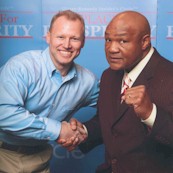

Todd Gifford with Cal Ripken, Jr. (the 'Iron Man' and Major League Baseball Hall of Famer)
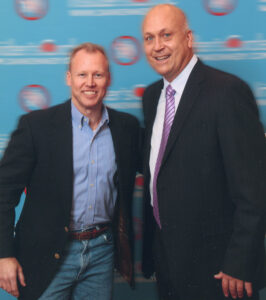

Todd Gifford with John Rich (Country Music Superstar and winner of the Celebrity Apprentice)
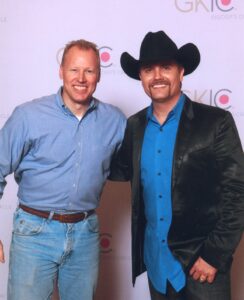

Todd Gifford with Ivanka Trump
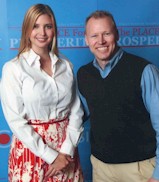

Todd Gifford with William Shatner of Star Trek and Boston Legal fame
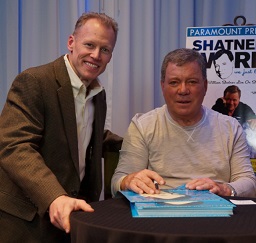

Todd Gifford with Penn Jillette, of Penn &Teller; Fame -- Magician, Comedian, Actor
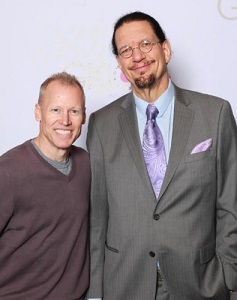

Todd Gifford with Bob Bondurant, International Racing Legend
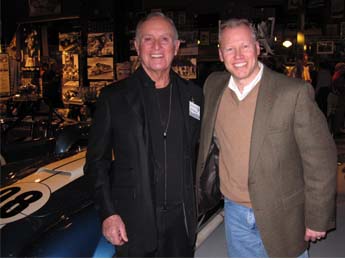

Todd Gifford with Wayne Carrini, Host of TV Show 'Chasing Classic Cars' on the Velocity Channel
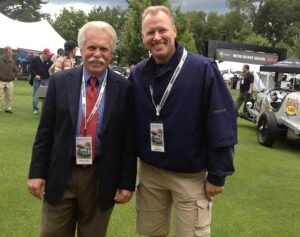

Todd Gifford with Kathy Ireland, Supermodel and Founder/CEO of a $1.5 Billion Company, Kathy Ireland Worldwide
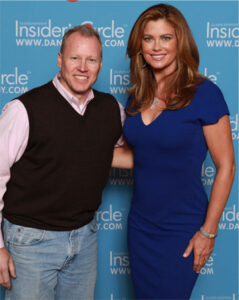

Todd Gifford with actor Adam West, the original Batman
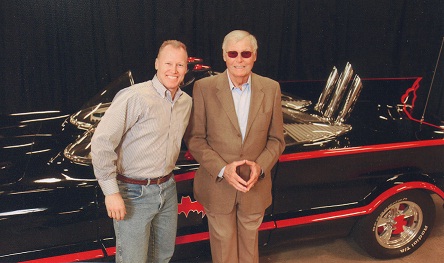

Todd Gifford with Jake Steinfeld, of Famed 'Body By Jake' for the Stars
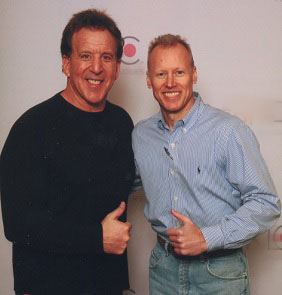

Todd Gifford with Iain Calder, former Chief Editor at the National Enquirer
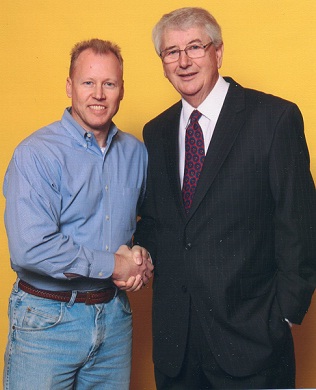

Todd Gifford with Michael Masterson, Business Guru and Best Selling Author
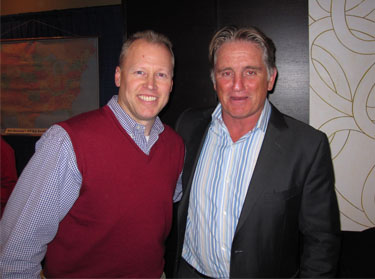

Todd Gifford with Dennis Albaugh, Billionaire and fellow car guy



